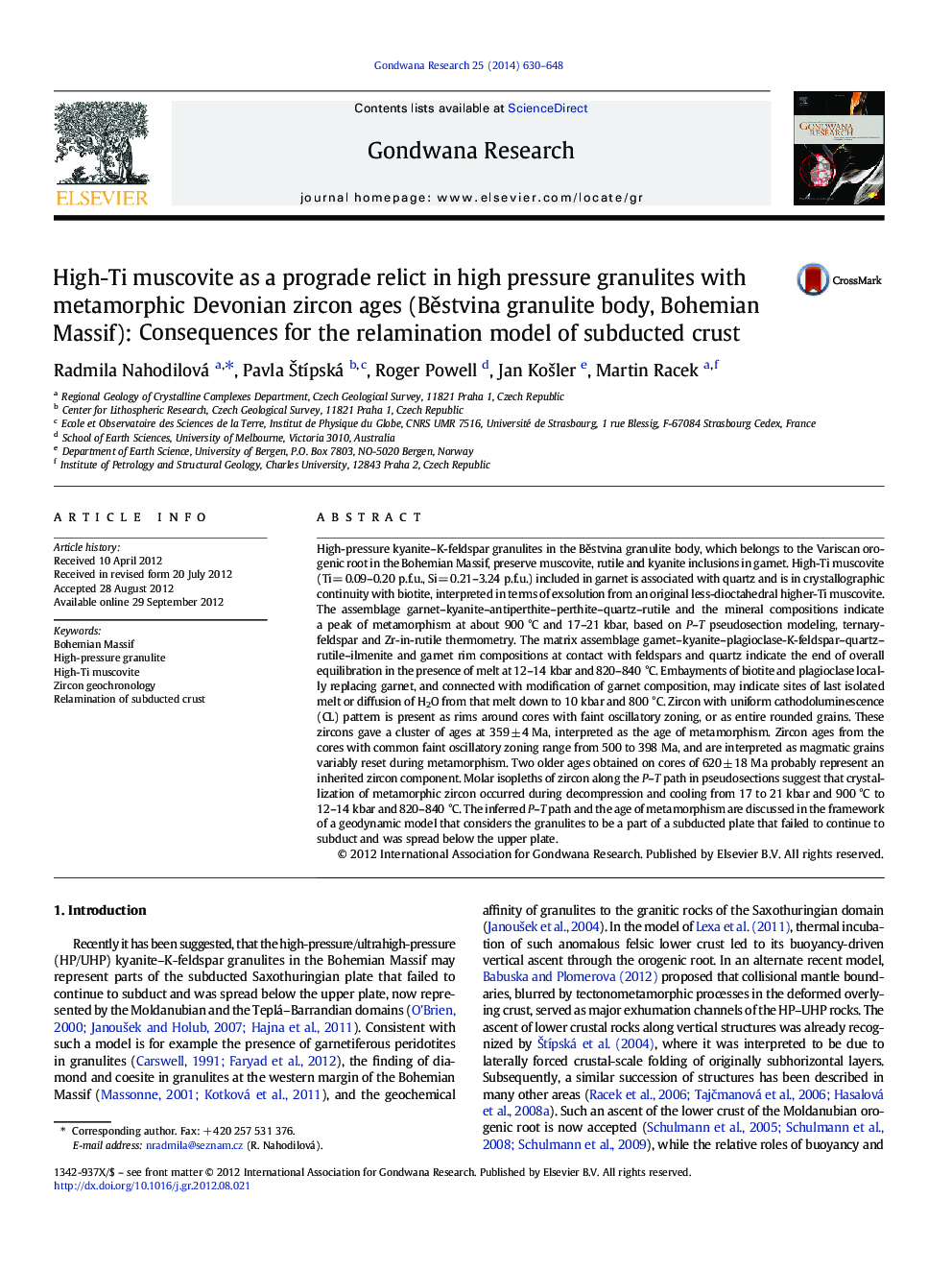| کد مقاله | کد نشریه | سال انتشار | مقاله انگلیسی | نسخه تمام متن |
|---|---|---|---|---|
| 4727092 | 1356360 | 2014 | 19 صفحه PDF | دانلود رایگان |

High-pressure kyanite–K-feldspar granulites in the Běstvina granulite body, which belongs to the Variscan orogenic root in the Bohemian Massif, preserve muscovite, rutile and kyanite inclusions in garnet. High-Ti muscovite (Ti = 0.09–0.20 p.f.u., Si = 0.21–3.24 p.f.u.) included in garnet is associated with quartz and is in crystallographic continuity with biotite, interpreted in terms of exsolution from an original less-dioctahedral higher-Ti muscovite. The assemblage garnet–kyanite–antiperthite–perthite–quartz–rutile and the mineral compositions indicate a peak of metamorphism at about 900 °C and 17–21 kbar, based on P–T pseudosection modeling, ternary-feldspar and Zr-in-rutile thermometry. The matrix assemblage garnet–kyanite–plagioclase-K-feldspar–quartz–rutile–ilmenite and garnet rim compositions at contact with feldspars and quartz indicate the end of overall equilibration in the presence of melt at 12–14 kbar and 820–840 °C. Embayments of biotite and plagioclase locally replacing garnet, and connected with modification of garnet composition, may indicate sites of last isolated melt or diffusion of H2O from that melt down to 10 kbar and 800 °C. Zircon with uniform cathodoluminescence (CL) pattern is present as rims around cores with faint oscillatory zoning, or as entire rounded grains. These zircons gave a cluster of ages at 359 ± 4 Ma, interpreted as the age of metamorphism. Zircon ages from the cores with common faint oscillatory zoning range from 500 to 398 Ma, and are interpreted as magmatic grains variably reset during metamorphism. Two older ages obtained on cores of 620 ± 18 Ma probably represent an inherited zircon component. Molar isopleths of zircon along the P–T path in pseudosections suggest that crystallization of metamorphic zircon occurred during decompression and cooling from 17 to 21 kbar and 900 °C to 12–14 kbar and 820–840 °C. The inferred P–T path and the age of metamorphism are discussed in the framework of a geodynamic model that considers the granulites to be a part of a subducted plate that failed to continue to subduct and was spread below the upper plate.
Figure optionsDownload as PowerPoint slideHighlights
► Prograde P–T path traced to 19 kbar/900 °C.
► Zircon chronology places the beginning of exhumation at 360 Ma.
► Buoyancy-driven ascent of the Bohemian granulites occurred at 340 Ma.
Journal: Gondwana Research - Volume 25, Issue 2, March 2014, Pages 630–648